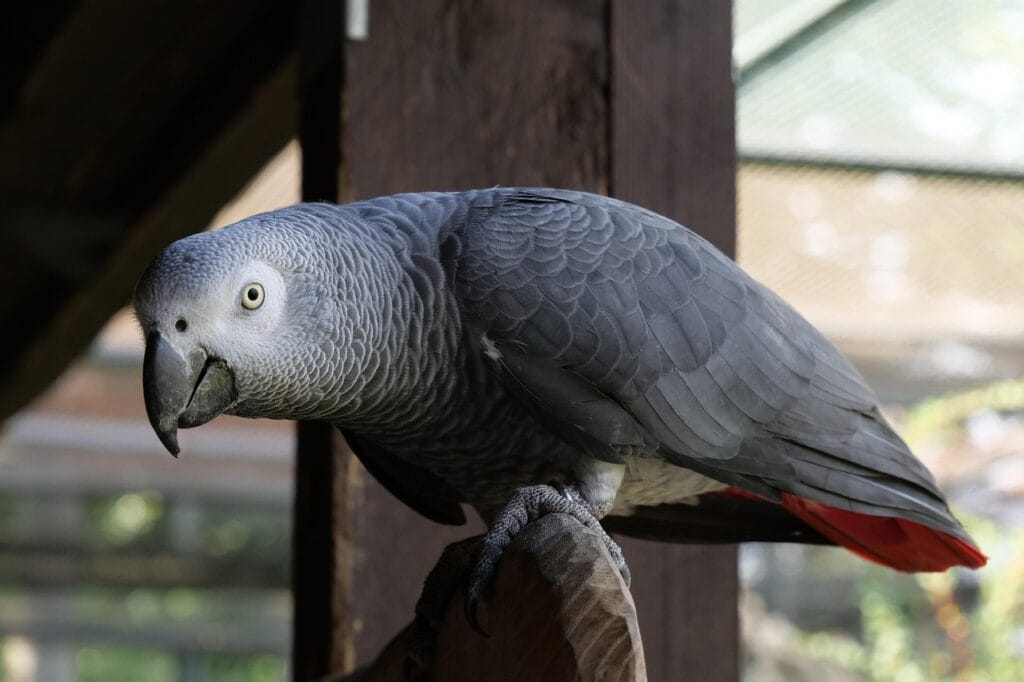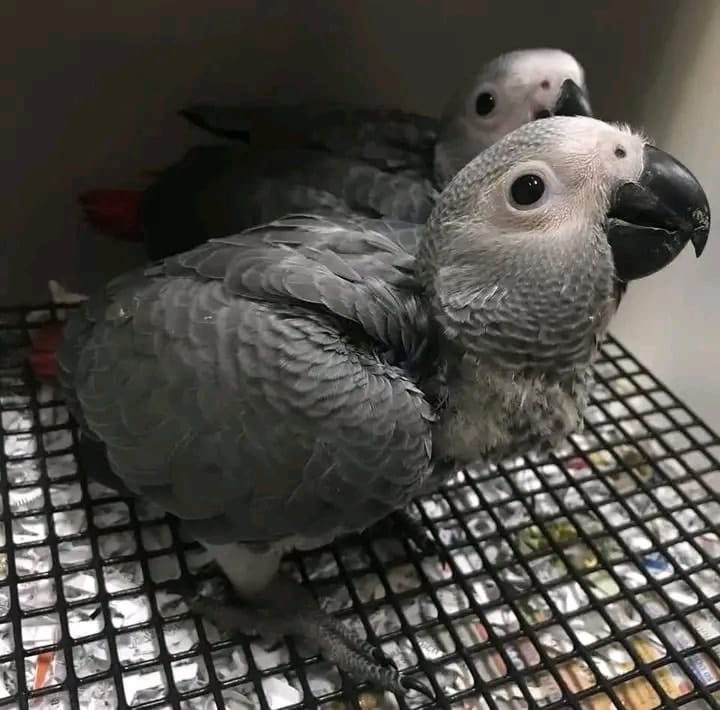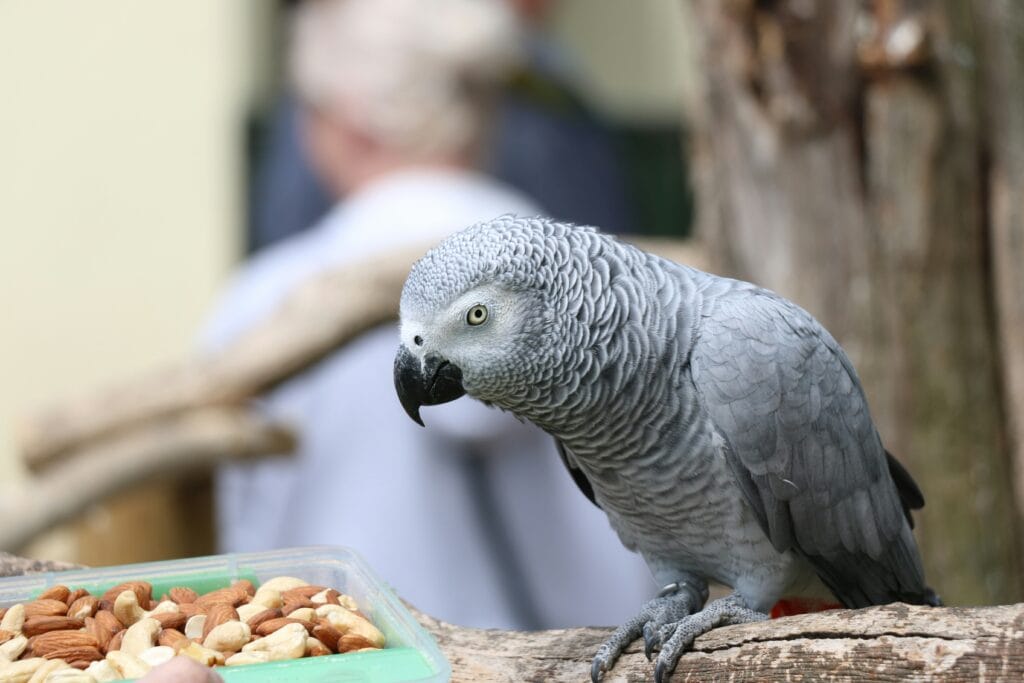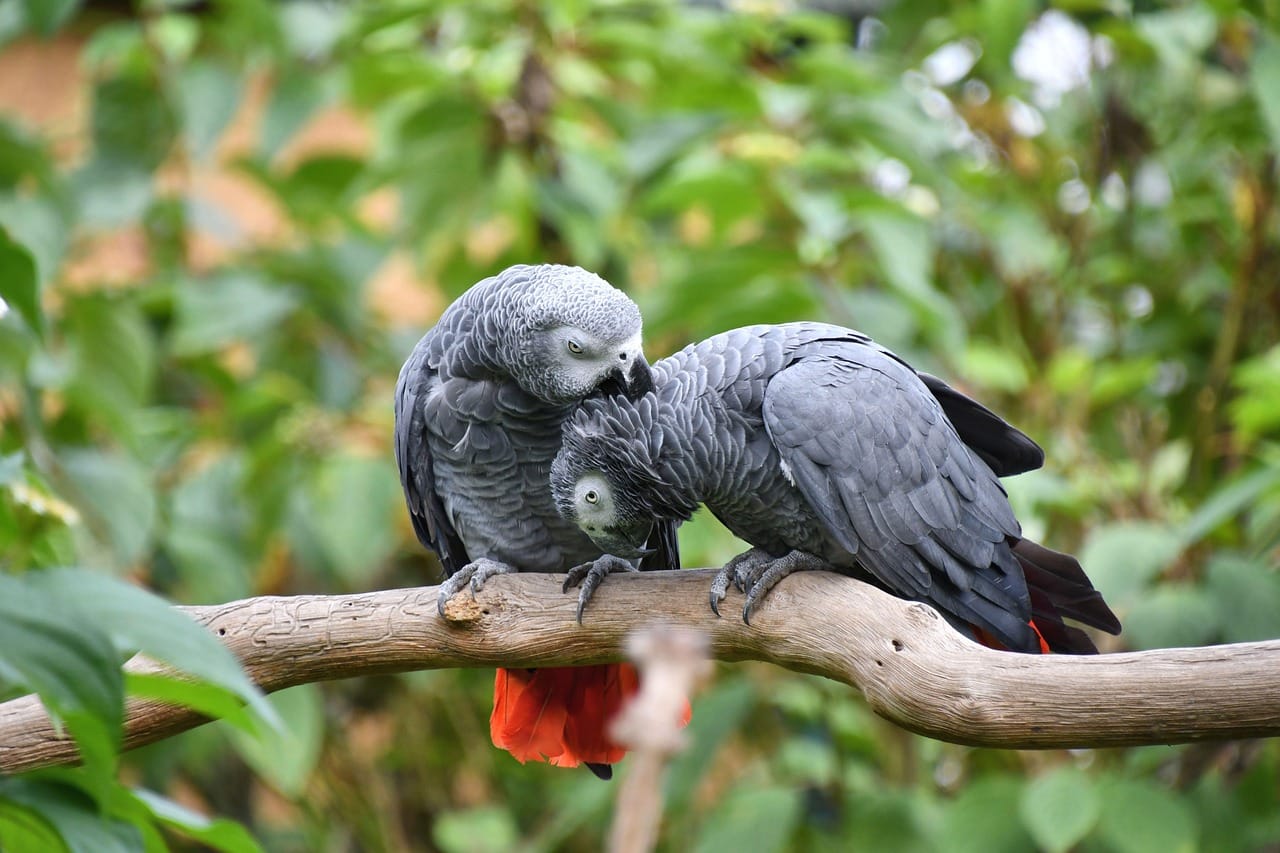African Gray Challenges – How to Overcome Common Issues
African gray parrots are among the most intelligent and emotionally complex birds on Earth. Known for their exceptional talking abilities, striking silver plumage, and deep emotional bonds with their human companions, they have become one of the most sought-after pet birds globally. However, owning an African gray as pet is not just about having a bird that can mimic your voice—it’s about understanding and supporting a sensitive, highly social, and long-lived creature.
Whether you are considering bringing one into your home or are a current owner looking to better understand your parrot, this guide dives deep into everything you need to know about keeping this gorgeous bird.
Table of Contents

Why Choose an African Gray as Pet?
Choosing this parrot is a decision that requires careful consideration. These birds are not merely pets—they are companions. With lifespans reaching up to 60 years in captivity, you’re not just adopting a bird; you’re committing to a lifetime partnership. Their charm lies not only in their ability to talk but also in their capacity to connect, empathize, and entertain with remarkable intelligence.
An African gray will observe your routines, memorize your habits, and sometimes even finish your sentences. For many, it feels like living with a feathered roommate rather than a conventional pet.
Meet the Two Types of African Grays
There are two main subspecies commonly kept as pets:
- Congo African Gray (Psittacus erithacus erithacus): Often called the Red-Tailed African, this is the larger of the two. It features light gray plumage, a vivid red tail, and a solid black beak.
- Timneh African Gray (Psittacus erithacus timneh): Slightly smaller, Timnehs have a darker charcoal body, a maroon tail, and a lighter horn-colored upper beak.
Both are equally intelligent and capable of speech. However, Timnehs tend to be more emotionally stable and may start speaking at an earlier age.
Lifespan and the Long-Term Commitment
One of the biggest considerations before choosing an African gray is their longevity. These birds often live for 40 to 60 years in captivity—sometimes even longer. This is not a short-term pet like a hamster or even a dog. You’re making a decades-long commitment that might outlast many other life events, including moving homes, changing jobs, or even raising children.
As such, potential owners should consider what happens to the bird if life circumstances change. Planning for their care over such a long span is part of the responsibility.
Unrivaled Intelligence
When people think about parrots, they usually picture a bird that talks. But what truly sets the African gray apart is not just its talking ability—it’s its reasoning skills and emotional depth.
African grays are often compared to human toddlers in terms of intelligence. Studies, including the famous work by Dr. Irene Pepperberg and her African gray “Alex,” show that these birds can count, identify colors and shapes, and even express desires using human words.
When you bring an African gray as pet into your home, you are inviting in a brainy bird that needs constant mental stimulation, social interaction, and enrichment.
Talking and Communication Skills
Yes, African grays are famous for their talking ability—and rightly so. A well-socialized African gray can learn hundreds of words and even understand the context in which to use them.
They can imitate not only your voice but also alarms, ringtones, doorbells, and even other pets in the house. However, what’s more fascinating is their ability to use human language appropriately. Some can ask for food, request cuddles, or even answer questions.
Keep in mind: not every African gray will talk, but most will mimic sounds, and all will find their own way to communicate. Regardless of vocabulary size, communication is key in building a bond.
Emotional Sensitivity and Bonding
Having an African gray is like having a sensitive child in the home. These parrots are incredibly attuned to their environment and their caregivers. They thrive on attention and often form strong bonds with one person in the household.
They can become jealous, anxious, or even depressed if they feel neglected. Many behavioral issues such as feather-plucking stem from a lack of social interaction or mental stimulation.
To raise a healthy, happy gray, you need to commit time daily to talk, play, and just be present. Their emotional well-being depends on it.
Selecting the Right Bird
If you’re looking to buy or adopt an this parrot, it’s crucial to choose carefully. Some are raised by breeders who hand-feed and socialize the chicks from a young age. These birds often transition into homes more easily and develop fewer behavioral problems.
Alternatively, rescuing an adult African gray can be incredibly rewarding but may come with challenges, especially if the bird has a traumatic history. Always observe the bird’s behavior before making a decision, and avoid impulsive purchases.
Juvenile vs. Adult: Which Is Better?
Juvenile African grays are curious and more moldable but require consistent training and gentle guidance. They can develop bad habits if not socialized correctly.
Adults may have established personalities and are less likely to change routines—but with patience and love, they can still become excellent companions. The best choice depends on your lifestyle, experience level, and willingness to invest time.

Housing: Not Just a Cage
An African gray as pet needs much more than a basic birdcage. The enclosure must be large, ideally at least 36”x24”x48”, and allow room for climbing and wing stretching.
Include:
- Multiple perches of varying textures and thickness
- Toys (rotate regularly)
- Food and water bowls
- A quiet sleeping space
Additionally, the cage must be in a social area of your home—not tucked away in isolation. Grays are flock animals and want to be where the action is.
Feeding Your African Gray
Nutrition is critical to their health. African grays are prone to calcium and vitamin A deficiencies, so a balanced diet is essential.
Ideal diet:
- 60–70% pellets (formulated for parrots)
- 20–30% fresh vegetables and fruits
- Occasional seeds and nuts (as treats)
Avoid avocado, chocolate, caffeine, alcohol, and salty or sugary foods. Fresh water must be available at all times.
Preventing Boredom with Enrichment
Without enrichment, an African gray as pet can quickly become stressed or destructive. They’re thinkers and need puzzles, games, and changes in routine to stay happy.
Try:
- Foraging toys with hidden treats
- Training sessions
- Music or bird-safe TV programs
- Social play with the family
The Importance of Play and Toys
Grays love to chew, shred, and dismantle. Provide them with plenty of destructible toys like cardboard, bird-safe wood, rope, and leather.
Always supervise toy use and avoid anything with toxic materials like zinc or lead.
Socialization Techniques That Work
Every gray should learn “step-up” commands and become accustomed to handling. Early training builds trust and establishes boundaries. Speak to them throughout the day. Grays enjoy participating in conversations—even if they don’t speak yet.
If you live alone, be sure your gray meets other people regularly. Otherwise, it may bond too strongly to you and become fearful or aggressive toward others.

Grooming and Health Maintenance
Regular grooming ensures your bird stays comfortable and healthy.
Include:
- Nail trims
- Occasional beak checks
- Gentle misting or shallow water baths
- Clean cage and fresh food daily
Due to their powder down (a fine dust used for feather maintenance), many African grays produce a noticeable amount of white dust. An air purifier is often recommended.
Health Issues to Watch For
Some common issues in African grays include:
- Hypocalcemia (calcium deficiency)
- Feather plucking
- Psittacosis
- Aspergillosis
Schedule yearly vet visits with an avian specialist. If your bird is lethargic, fluffed up, not eating, or acting unusually, don’t wait—seek professional help.
Behavioral Challenges and How to Solve Them
Biting, screaming, and plucking are the most common issues seen in African gray parrots. Fortunately, they are often preventable and manageable.
Tips:
- Never use punishment
- Reinforce positive behavior
- Avoid sudden changes in routine
- Offer comfort, not confrontation, when they’re scared
Training Your African Gray
Use positive reinforcement techniques such as clicker training. Keep sessions short (5–10 minutes) and consistent. Training isn’t just about tricks—it builds communication and trust.
Teach them simple words, “step-up,” target training, or even colors and objects. An engaged gray is a happy gray.
Traveling with Your African Gray
Travel can be stressful. Use a secure, padded carrier and bring familiar items like a toy or blanket. Speak to them calmly during the trip. Never travel with your bird loose or unrestrained.
Avoid extreme temperatures and make sure their travel area is draft-free and safe.
Legal Considerations
African grays are listed under CITES Appendix I, meaning they are protected by international law. Always ensure your bird is captive-bred, with paperwork to prove it. In some areas, special licenses or registration may be required.
Can Families and Kids Own African Grays?
An African gray as pet can do well in families, but supervision is key. Children must be taught to respect the bird’s boundaries. Grays can be sensitive and may not tolerate rough handling or loud environments.
Myths vs. Reality
Myth: All African grays talk.
Reality: Most do, but not all. Talking should be seen as a bonus—not a guarantee.
Myth: They’re low-maintenance.
Reality: Quite the opposite. They require daily care, attention, and emotional support.
The Real Joy of Owning an African Gray
The bond between a human and an African gray as pet is unlike any other. These birds can become lifelong companions that brighten your days with chatter, antics, and affection. The joy of having a bird greet you by name or respond to your mood is hard to put into words.
They love to dance, sing, whistle, and play. With the right care and environment, your gray will be a source of delight for decades.
The Challenges You Need to Know
While rewarding, owning an African gray as pet is not always easy. These parrots can be demanding, moody, and even manipulative. They may test boundaries, throw tantrums, and develop deep emotional needs.
Their intelligence, while a blessing, also means they remember everything—good and bad. Any neglect or mistreatment can have lasting impacts.
Is the African Gray the Right Pet for You?
If you want a quiet, low-maintenance pet—this bird is not for you.
But if you’re ready for a witty, talkative, interactive companion who will demand your time and love you fiercely in return, then choosing an African gray as pet may be the best decision of your life.
Here’s a strong, SEO-optimized conclusion for your article on African gray parrots. It summarizes the key insights while reinforcing emotional and practical aspects of ownership:
Conclusion:
A Lifelong Bond with an Extraordinary Bird
Owning an African gray parrot is not just about enjoying a talking bird—it’s about welcoming a deeply intelligent, emotionally sensitive, and highly social companion into your life. These feathered wonders require patience, time, enrichment, and unwavering dedication. But for those who are ready to meet their needs, African grays offer unmatched companionship, laughter, and affection that lasts for decades.
From their stunning looks to their uncanny ability to mimic voices and express emotions, African grays are in a league of their own. Yet, with great intelligence comes great responsibility. They are not pets to be caged and forgotten—they are family members who thrive on love, interaction, and routine.
If you’re ready for a long-term relationship with a creature that can challenge your mind and touch your heart, the African gray parrot might just be the perfect feathered friend for you.
FAQ
Do African gray parrots talk a lot?
Yes, many of them develop large vocabularies and use words in context.
Can I leave my African gray alone during the day?
They prefer regular interaction, so if you’re gone all day, enrichment and routine are vital.
Are African grays good for beginners?
Generally, no. Their intelligence and sensitivity make them more suitable for experienced owners.
What’s the average cost of keeping an African gray as pet?
Initial costs can exceed $2,000 (including the bird and cage), with ongoing expenses for food, toys, and vet care.
Did you enjoy this article?
Help other pet lovers benefit too — Share it on social media! 🐾💚


Leave a Reply